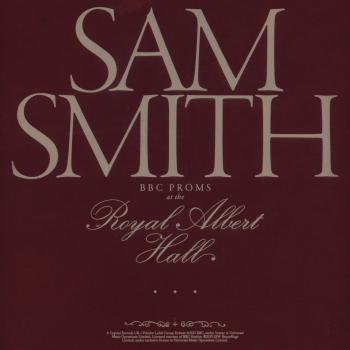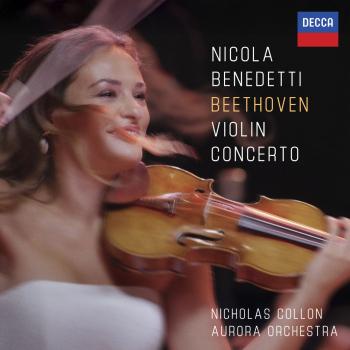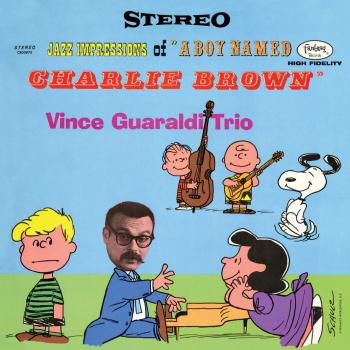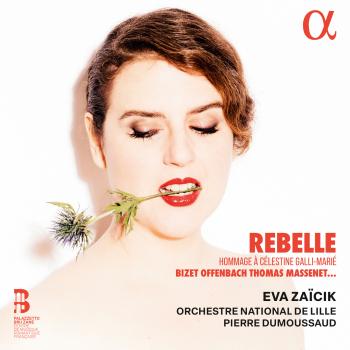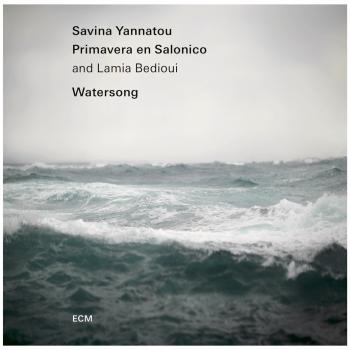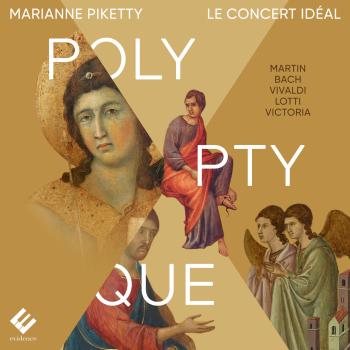
Polyptyque Marianne Piketty & Le Concert Idéal
Album info
Album-Release:
2025
HRA-Release:
18.04.2025
Label: Evidence Classics
Genre: Classical
Subgenre: Chamber Music
Artist: Marianne Piketty & Le Concert Idéal
Composer: Frank Martin (1890-1974), Antonio Lotti (1666-1740), Antonio Vivaldi (1678-1741), Nicolas Chedeville (1705-1782), Tomas Luis de Victoria (1548-1611), Johann Sebastian Bach (1685-1750)
Album including Album cover Booklet (PDF)
Coming soon!
Thank you for your interest in this album. This album is currently not available for sale but you can already pre-listen.
Tip: Make use of our Short List function.
- Johann Sebastian Bach (1685 - 1750): Matthäus-Passion, BWV 244, Seconda parte:
- 1 Bach: Matthäus-Passion, BWV 244, Seconda parte: No. 34, Mein Jesus schweigt zu falschen Lügen stille (Transc. for String Ensemble by Olivier Fourés) 01:01
- Antonio Lotti (1667 - 1740): Crucifixus à 10 (Transc. for String Ensemble by Olivier Fourés):
- 2 Lotti: Crucifixus à 10 (Transc. for String Ensemble by Olivier Fourés) 01:50
- Frank Martin (b. 1992): Polyptyque for Violin and Two Small String Orchestras:
- 3 Martin: Polyptyque for Violin and Two Small String Orchestras: I. Image des Rameaux 03:47
- Antonio Vivaldi (1678 - 1741): Laetatus sum in C Major, RV 827:
- 4 Vivaldi: Laetatus sum in C Major, RV 827: II. Rogate quae ad pacem sunt (Transc. for String Ensemble by Olivier Fourés) 01:07
- Nicolas Chédeville (1705 - 1782): Il pastor fido, Op. 13, Sonata No. 6 in G Minor:
- 5 Chédeville: Il pastor fido, Op. 13, Sonata No. 6 in G Minor: II. Fuga da capella. Alla breve (Transc. for String Ensemble by Olivier Fourés) 01:43
- Johann Sebastian Bach: Concerto in G Minor, BWV 975 (after Vivaldi's Violin Concerto in G Minor, RV 316):
- 6 Bach: Concerto in G Minor, BWV 975 (after Vivaldi's Violin Concerto in G Minor, RV 316): II. Largo (Transc. for String Ensemble by Olivier Fourés) 03:03
- Frank Martin: Polyptyque for Violin and Two Small String Orchestras:
- 7 Martin: Polyptyque for Violin and Two Small String Orchestras: II. Image de la Chambre haute 06:02
- Antonio Vivaldi: Gloria, RV 588:
- 8 Vivaldi: Gloria, RV 588: IV. Et in terra pax hominibus (Transc. for String Ensemble by Olivier Fourés) 04:54
- Frank Martin: Polyptyque for Violin and Two Small String Orchestras:
- 9 Martin: Polyptyque for Violin and Two Small String Orchestras: III. Image de Juda 02:03
- Tomas Luis de Victoria (1548 - 1611): O magnum mysterium:
- 10 Victoria: O magnum mysterium 03:01
- Johann Sebastian Bach: Weinen, Klagen, Sorgen, Zagen, BWV 12:
- 11 Bach: Weinen, Klagen, Sorgen, Zagen, BWV 12: II. Chorus. Weinen, Klagen (Transcr. for String Ensemble by Olivier Fourés) 02:25
- Magnificat in D Major, BWV 243:
- 12 Bach: Magnificat in D Major, BWV 243: IV. Chorus. Omnes generationes (Transc. for String Ensemble by Olivier Fourés) 01:08
- Frank Martin: Polyptyque for Violin and Two Small String Orchestras:
- 13 Martin: Polyptyque for Violin and Two Small String Orchestras: IV. Image de Gethsémané 04:00
- Johann Sebastian Bach: Concerto in G Minor, BWV 975 (after Vivaldi's Violin Concerto in G Minor, RV 316):
- 14 Bach: Concerto in G Minor, BWV 975 (after Vivaldi's Violin Concerto in G Minor, RV 316): III. Giga. Presto (Transc. for String Ensemble by Olivier Fourés) 01:48
- Antonio Vivaldi: Beatus vir, RV 597/795:
- 15 Vivaldi: Beatus vir, RV 597/795: V. In memoria aeterna (Transc. for String Ensemble by Olivier Fourés) 04:00
- Frank Martin: Polyptyque for Violin and Two Small String Orchestras:
- 16 Martin: Polyptyque for Violin and Two Small String Orchestras: V. Image du Jugement 03:44
- Antonio Vivaldi: Credo, RV 592:
- 17 Vivaldi: Credo, RV 592: III. Crucifixus 02:02
- Frank Martin: Polyptyque for Violin and Two Small String Orchestras:
- 18 Martin: Polyptyque for Violin and Two Small String Orchestras: VI. Image de la Glorification (Transc. for String Ensemble by Olivier Fourés) 04:26
- Johann Sebastian Bach: Passacaglia and Fugue in C Minor, BWV 582 (Transc. for String Ensemble by Olivier Fourés):
- 19 Bach: Passacaglia and Fugue in C Minor, BWV 582 (Transc. for String Ensemble by Olivier Fourés) 10:28
- Antonio Vivaldi: Dixit Dominus in D Major, RV 594:
- 20 Vivaldi: Dixit Dominus in D Major, RV 594: X. Sicut erat in principio (Transc. for String Ensemble by Olivier Fourés) 02:40
Info for Polyptyque
"Inspired by Duccio's polyptych, Swiss composer Frank Martin decided to write a work in six ‘tableaux’ based on the Passion of Christ. In ‘Polyptyque’, a concerto for violin and two small orchestras rooted in the music of Bach, Martin sets out to transpose musically the scenes of the Crucifixion.
This work is the starting point for the new recording by Marianne Piketty and the Concert Idéal. It is interspersed with works by Vivaldi, Bach, Lotti and Victoria, like so many tableaux responding to Martin's work. By opening up a dialogue between ancient and modern, sacred and secular, Marianne Piketty explores the continuum of human emotions, reminding us that they are at once universal and ephemeral, and yet a source of beauty and plenitude."
“No thing, no self, no form, no pattern is certain; everything is swept up in an invisible metamorphosis, never at rest.” — Robert Musil
When the violinist Yehudi Menuhin commissioned a piece from Frank Martin, the composer immediately thought of Bach—his concertos, his Passions—but ultimately found inspiration in a six-panel polyptych by Duccio, depicting the final moments of Christ’s life.
It is within this dynamic of influence and divergence that Marianne Piketty and Le Concert Idéal present Frank Martin’s Polyptyque, written for two string quintets and solo violin. This work, both descriptive and introspective, is placed in dialogue with pieces by other composers such as Bach, Vivaldi, Lotti, and Victoria—artists who, across time, space, and ideas, have encountered one another and passed on the flame of inspiration. — Olivier Fourés
This new program was built around Frank Martin’s Polyptyque. Its beauty and its expressive, narrative power offered a rich space for creativity. As I delved into this work—exploring its material and gradually shaping its interpretation—I sensed a connection between the emotions portrayed by Frank Martin (the futility of fleeting glory, the despair of a lost soul, anguish, the violence of a crowd, dismay and solitude) and the feelings we may experience when faced with the chaos of the modern world.
This sacredly inspired music radiated into everyday life, which in turn nourished it. The architecture of the spectacle was then conceived: weaving together the old and the new, as a way to reveal the continuity of human emotion, and to bring sacred and secular side by side in order to question their boundaries.
The early works were chosen for their musical and narrative resonance. As the listener progresses through the program, these pieces embrace our turmoil and soothe us. The two worlds feed into one another, echoing each other and sketching a possible path—one where beauty prevails, opening the way to serenity and a kind of joy.
Polyptyque offers this mindful, meditative journey toward the light. — Marianne Piketty
Marianne Piketty, violin & direction
Le Concert Ideal
Marianne Piketty
Density, ardor, virtuosity, interiority and generosity.
Here are the glowing terms with which the press welcomes Marianne Piketty. From Bach to Piazzolla, from the Baroque reduction to contemporary creation, the violinist Marianne Piketty develops a career as dynamic as versatile: solo appearances, in recital, at the head of an ensemble, as well as in her numerous chamber music projects.
A graduate of the CNSM in Paris and the Juilliard School of New York, she is one of the heirs of the classical violin tradition thanks to her training with great masters such as Itzhak Perlman and Yehudi Menuhin.
In 2013, Marianne Piketty gathered around her Le Concert Idéal, a variable geometry ensemble of international soloists and chamber musicians from horizons as diverse as specialized, who use all their resources to explore music from all angles, over time and space but also its relationships with literature, theater and dance.
Artist as charismatic as essential, Marianne Piketty is distinguished in particular by an extraordinary desire to undertake, an inexhaustible taste for new meetings and performance, always with in the heart the will to share and the spirit of the collective. Rigor, exacting standards and surpassing oneself are the watchwords of a violinist who practices her instrument at a run, at the rhythm of an athlete.
Marianne Piketty plays a Venetian violin by Carlo Tononi dated 1685.
Booklet for Polyptyque

